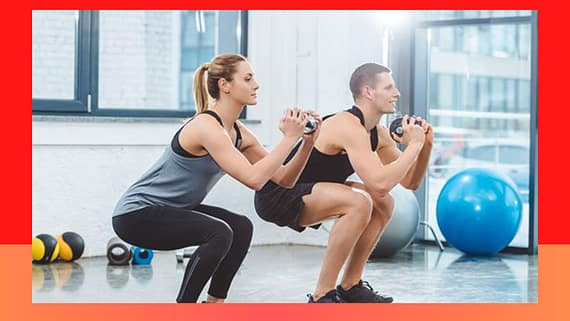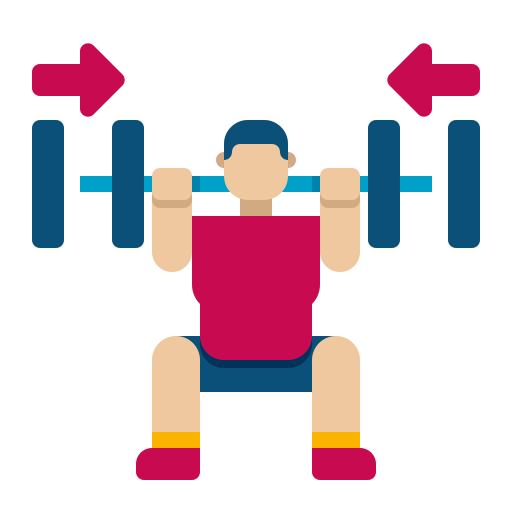If you’ve been wondering why your squat is not improving despite your efforts, this article is for you! Discover the common mistakes that are slowing you down and learn how to optimize your technique for better results.
Squatting too low can be bad for some people, while it may not affect others. It depends on factors such as mobility, anatomy, and individual goals. For those with limited mobility or specific joint conditions, squatting too low can place excessive stress on their knees, hips, or lower back. However, for others, squatting deep can provide greater muscle activation and strength gains. Ultimately, it’s essential to find a squat depth that works best for your body and fitness goals, and to prioritize proper form and technique over depth.
Can be bad for some people, while it may not affect others.
When it comes to squatting, there’s often a debate on how low one should go. While some fitness enthusiasts swear by deep squats for maximum muscle activation and strength gains, others caution against going too low, especially for those with mobility or joint issues.
It’s very important to understand that not everyone’s body is built the same, and individual factors such as mobility, anatomy, and fitness goals can affect how low you should squat.
For example, someone with limited mobility in their hips or ankles may struggle to perform a deep squat without compromising their form and placing excessive stress on their joints.
Similarly, individuals with specific joint conditions such as arthritis or a herniated disc may need to modify their squat depth to avoid aggravating their condition.
On the other hand, for those with healthy joints and sufficient mobility, squatting deep can provide greater muscle activation and strength gains, especially in the glutes, quads, and hamstrings.
Deep squats also require greater core stability and balance, making them a more challenging exercise that can improve overall athletic performance.
Ultimately, the key is to find a squat depth that works best for your body and fitness goals. This may require experimenting with different squat variations and depths, seeking guidance from a fitness professional, and listening to your body’s signals.
Remember, the goal is not to achieve the deepest squat possible, but to perform the exercise with proper form and technique to avoid injury and maximize results.
So, whether you prefer deep squats or higher squats, stay true to yourself, and keep striving towards your fitness goals.

Find a squat depth that works best for your body and fitness goals.
In the end, the most important thing when it comes to squatting is to listen to your body and find a depth that works best for you.
It can be tempting to compare yourself to others or feel pressure to perform a certain way, but remember that everyone’s body is unique, and what works for someone else may not work for you.
Instead, focus on your individual fitness goals and prioritize proper form and technique over depth. This means taking the time to warm up properly, engaging your core, and maintaining good posture throughout the movement.
By finding a squat depth that feels comfortable and safe for your body, you can minimize the risk of injury and maximize the benefits of this powerful exercise.
Whether you’re aiming to build strength, increase mobility, or simply stay active and healthy, remember that your journey is unique and valid. Trust yourself and keep pushing towards your goals, one squat at a time.
Prioritize proper form and technique over depth.
This means taking the time to learn the correct squatting technique, practicing with light weights or bodyweight, and seeking guidance from a qualified fitness professional if necessary.
It also means paying attention to your body’s signals and adjusting your form as needed to avoid discomfort or pain.
By prioritizing proper form and technique, you can ensure that each squat is a step towards your fitness goals, rather than a potential setback.
So don’t rush the process, and don’t be afraid to start small. Remember, every successful squat starts with a strong foundation.
How To Correct A Problem With Squatting Too Low ^^
Final thought
Squat stimulates various muscular groups, including your quadriceps, hamstrings, calves, glutes, and hips, as well as your core abdominal muscles, making it one of the most efficient complex exercises you can do.
Dumbbells or weighted barbells can also be used when performing squats to increase their intensity and build more muscle.
Bodyweight squats are a typical workout for toning and strengthening various muscle groups.
The main drawback to this exercise is that it can be challenging to do with good form, increasing the risk of injury.
Additionally, it’s not always enjoyable because it pushes you so hard. Many people decide against using squats in their workout regimen.
FAQs
Can Squats Increase Your Bum Size?
Yes, but in a positive manner.
Regular squats will give you a more extensive, rounder butt with more defined muscles (mainly if you use weights), making your butt appear far more excellent than a tiny, squatty butt or one that is thin and wrinkly.
How Many Squats must you perform each day to see progress?
Your ultimate objective heavily influences this. 30-100 bodyweight squats per day may be sufficient to burn fat, tone up your entire body, and strengthen your core.
However, if your goal is to develop more giant legs, you should perform shorter sets of 10 to 20 reps with heavy weights and cut back on your training to once or twice per week to give your legs time to recover.
Conclusion
In conclusion, if you’ve been wondering “Why’s My Squat So Slow?”, it’s time to take action and make some changes.
By addressing common mistakes such as poor technique, lack of mobility, and insufficient volume, you can improve your squat performance and feel like a powerhouse in the gym.
Don’t give up on your squatting dreams – with the right guidance and dedication, you can achieve your goals and feel proud of your progress. So get out there and start squatting like a boss!
Related Article:
Is squatting too low so bad? (6 things to know Explained)

Hey there, it’s Mike Rrsq, the Editor-in-Chief over at Jsquat.com, and I’m absolutely obsessed with all things squat fitness! I’ve been lucky enough to get some serious recognition for my work in this field. With a solid background in the fitness and wellness industry, I’ve been there right from the get-go, helping shape this website into what it is today.
You see, I’m not just the boss around here; I’m also a passionate contributor. I love sharing my insights through my articles, and trust me, they’re not your run-of-the-mill stuff. Each piece I write is a labor of love, filled with my expertise and real-world experience in the fitness universe. So, if you’re into fitness and looking for some inspiration, you’re in the right place!
